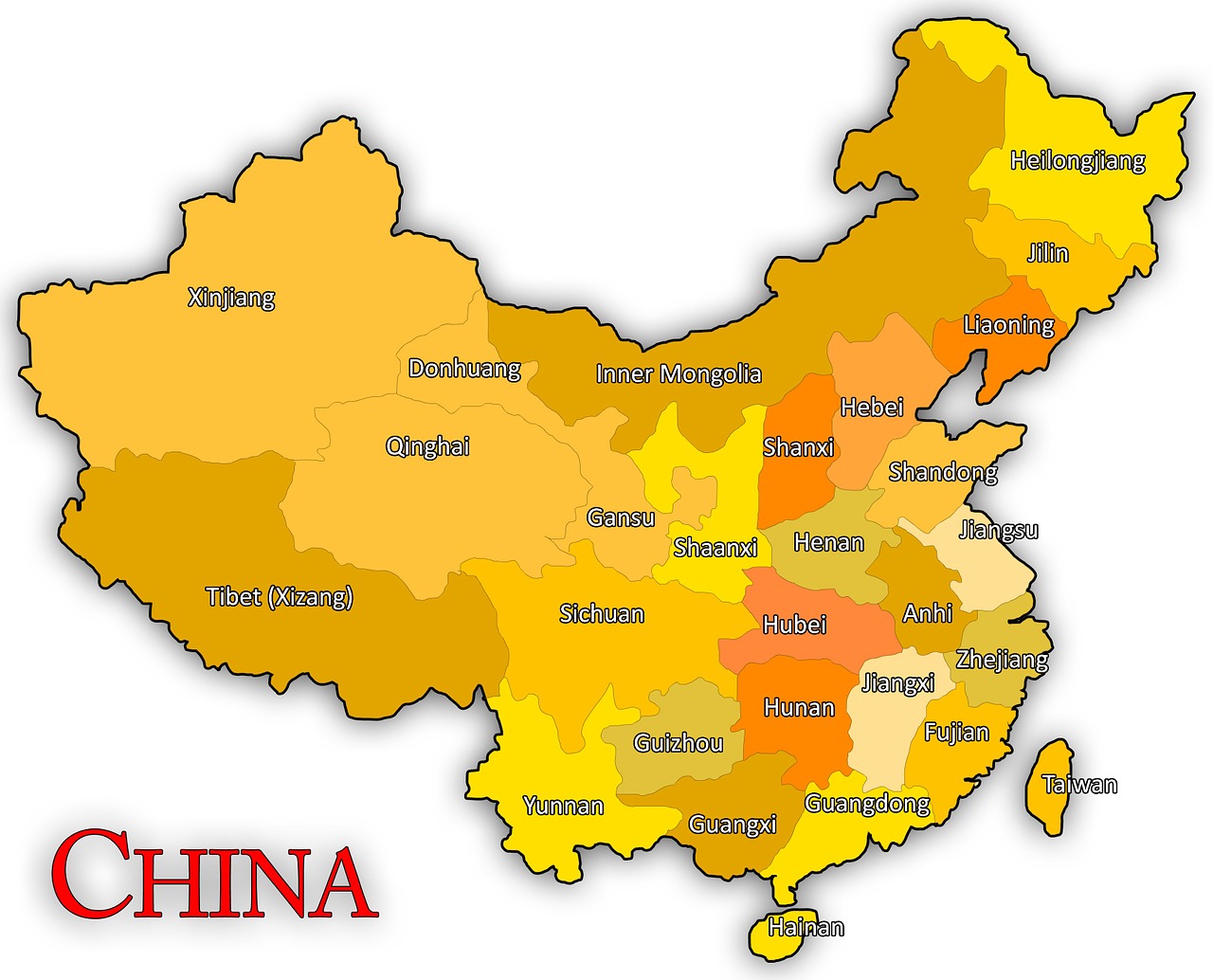History of China – China, a country known for its rich culture, long history, and significant contributions to human civilization, has a fascinating past that spans over thousands of years. In this article, we will take a closer look at the history of China, including its timeline summary, dynasties, and maps.
Introduction
China’s history is vast and complex, with many significant events and periods that have shaped the country as it is today. From the Xia Dynasty to the present day, China has undergone significant changes, both politically and culturally. Understanding the history of China is essential for anyone interested in its culture and people.
Timeline Summary
The history of China can be divided into several periods, each with its unique characteristics and significant events. Here is a timeline summary of China’s major historical periods:
Xia Dynasty (2100-1600 BCE)
The Xia Dynasty is the first dynasty in Chinese history, with little information known about it. According to legend, the Xia Dynasty was founded by Yu the Great, who is famous for controlling the floods.
Shang Dynasty (1600-1046 BCE)
The Shang Dynasty is known for its bronze art, oracle bones, and writing system. The last king of the Shang Dynasty, Zhou, was overthrown by the Zhou Dynasty.
Zhou Dynasty (1046-256 BCE)
The Zhou Dynasty is divided into the Western Zhou Dynasty and the Eastern Zhou Dynasty. The Western Zhou Dynasty was known for its agriculture and military prowess, while the Eastern Zhou Dynasty was known for its philosophical and cultural developments.
Qin Dynasty (221-206 BCE)
The Qin Dynasty is famous for unifying China, building the Great Wall, and creating the Terracotta Army.
Han Dynasty (206 BCE-220 CE)
The Han Dynasty is known for its significant contributions to Chinese culture, including the development of Confucianism and the Silk Road.
Three Kingdoms Period (220-280 CE)
The Three Kingdoms Period is a period of political and military conflict between three states: Wei, Shu, and Wu.
Jin Dynasty (265-420 CE)
The Jin Dynasty is known for its division into the Western Jin Dynasty and the Eastern Jin Dynasty, as well as the Northern and Southern Dynasties that followed.
Sui Dynasty (581-618 CE)
The Sui Dynasty is known for unifying China and building the Grand Canal.
Tang Dynasty (618-907 CE)
The Tang Dynasty is known for its cultural and artistic achievements, including poetry, music, and dance.
Five Dynasties and Ten Kingdoms Period (907-960 CE)
The Five Dynasties and Ten Kingdoms Period is a period of political turmoil and regional warfare.
Song Dynasty (960-1279 CE)
The Song Dynasty is known for its development of movable type printing, gunpowder, and paper money.
Yuan Dynasty (1279-1368 CE)
The Yuan Dynasty is known for being ruled by the Mongols, with Kublai Khan as its most famous leader.
Ming Dynasty (1368-1644 CE)
The Ming Dynasty is known for its cultural and artistic achievements, including the famous Ming porcelain.
Qing Dynasty (1644-1912 CE)
The Qing Dynasty is known for its expansionism, as well as its eventual collapse in the face of Western imperialism.
Dynasties of China
China’s dynasties are a crucial aspect of its history, with each dynasty leaving a significant impact on the country’s culture and politics. Here is a closer look at some of China’s most famous dynasties:
Xia Dynasty
The Xia Dynasty is the first dynasty in Chinese history, although there is little information known about it.
Shang Dynasty
The Shang Dynasty is known for its bronze art, oracle bones, and writing system. It was during this period that the Chinese civilization made significant strides in terms of art, science, and technology. The last king of the Shang Dynasty, Zhou, was overthrown by the Zhou Dynasty.
Zhou Dynasty
The Zhou Dynasty lasted for over 800 years, making it one of the longest dynasties in Chinese history. It was divided into the Western Zhou Dynasty and the Eastern Zhou Dynasty. The Western Zhou Dynasty was known for its agriculture and military prowess, while the Eastern Zhou Dynasty was known for its philosophical and cultural developments.
Qin Dynasty
The Qin Dynasty was founded by Qin Shi Huangdi, who is famous for unifying China, building the Great Wall, and creating the Terracotta Army. This dynasty also established a centralized government, a standardized writing system, and a legal code.
Han Dynasty
The Han Dynasty is one of the most famous dynasties in Chinese history. It lasted for over 400 years and is known for its significant contributions to Chinese culture, including the development of Confucianism and the Silk Road. During this period, China experienced significant economic growth and cultural development.
Tang Dynasty
The Tang Dynasty is known for its cultural and artistic achievements, including poetry, music, and dance. It was also during this period that Buddhism gained widespread acceptance in China. The Tang Dynasty is often referred to as China’s “golden age,” due to its significant cultural, scientific, and technological advancements.
Song Dynasty
The Song Dynasty is known for its development of movable type printing, gunpowder, and paper money. It was during this period that China became a world leader in science and technology, with significant advancements made in fields such as astronomy, mathematics, and medicine.
Yuan Dynasty
The Yuan Dynasty was ruled by the Mongols, with Kublai Khan as its most famous leader. It is known for its significant contributions to the Chinese economy, as well as its efforts to promote cultural exchange between China and the West.
Ming Dynasty
The Ming Dynasty is known for its cultural and artistic achievements, including the famous Ming porcelain. It was during this period that China experienced significant economic growth, as well as advancements in science, technology, and literature.
Qing Dynasty
The Qing Dynasty is known for its expansionism, as well as its eventual collapse in the face of Western imperialism. It was during this period that China was forced to open up to the West, leading to significant changes in its political and economic systems.
Maps
Throughout China’s history, its borders have expanded and contracted, and its political systems have undergone significant changes. Here are some maps that showcase China’s historical boundaries:
- Map of the Xia Dynasty
- Map of the Shang Dynasty
- Map of the Zhou Dynasty
- Map of the Qin Dynasty
- Map of the Han Dynasty
- Map of the Tang Dynasty
- Map of the Song Dynasty
- Map of the Yuan Dynasty
- Map of the Ming Dynasty
- Map of the Qing Dynasty
Conclusion
The history of China is long and complex, with many significant events and periods that have shaped the country as it is today. From the Xia Dynasty to the present day, China has undergone significant changes, both politically and culturally. Understanding the history of China is essential for anyone interested in its culture and people.
FAQs
- What was the first dynasty in China?
The Xia Dynasty is considered the first dynasty in Chinese history.
- Who founded the Qin Dynasty?
Qin Shi Huangdi founded the Qin Dynasty.
- What is the Silk Road?
The Silk Road was a trade route that connected China with the Mediterranean world.




